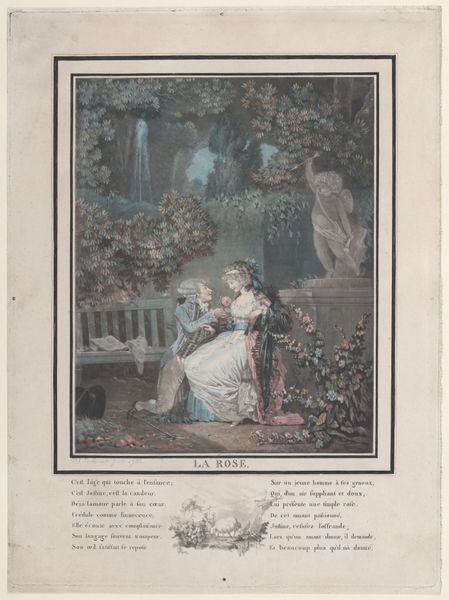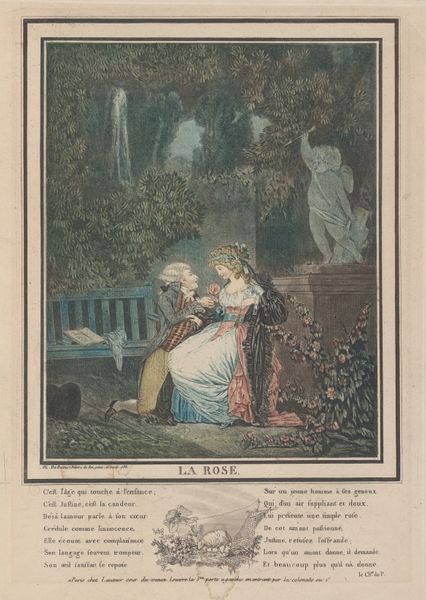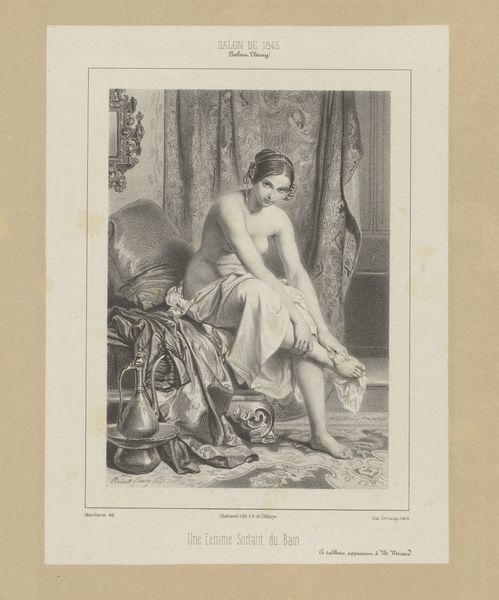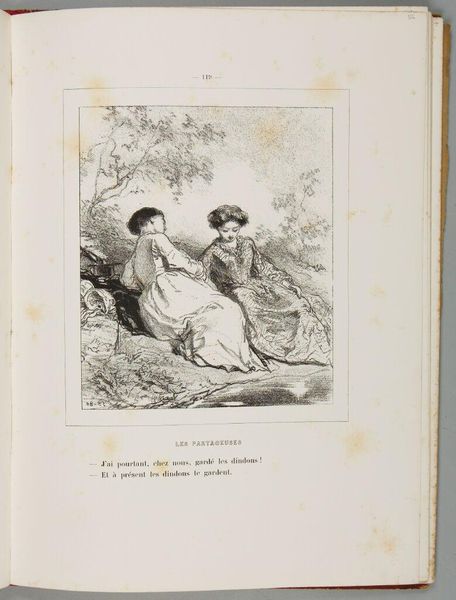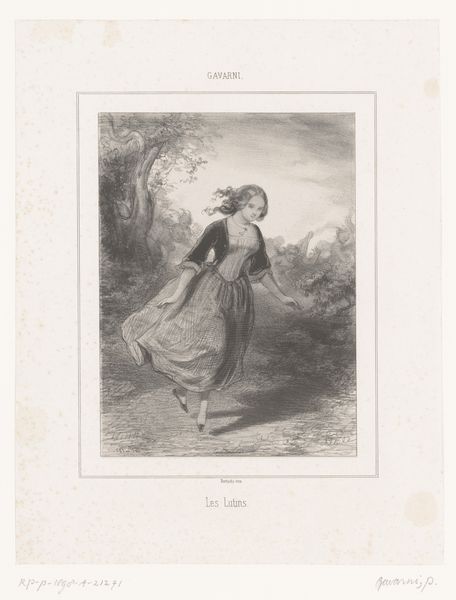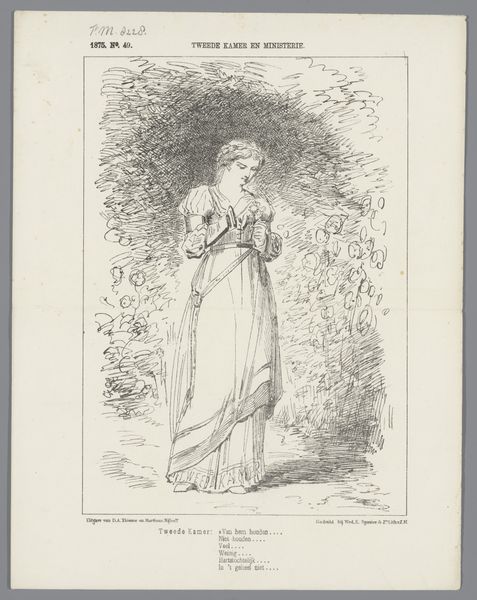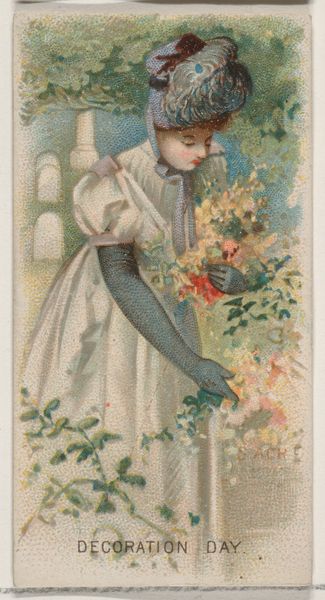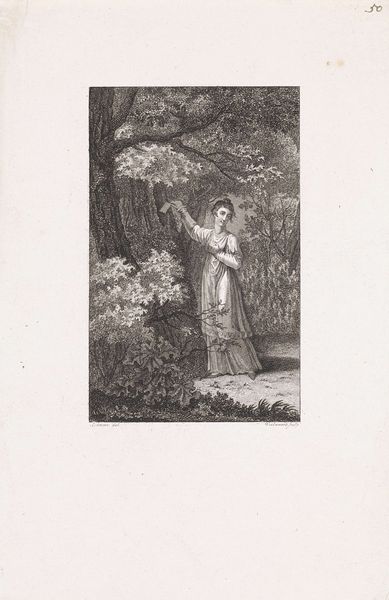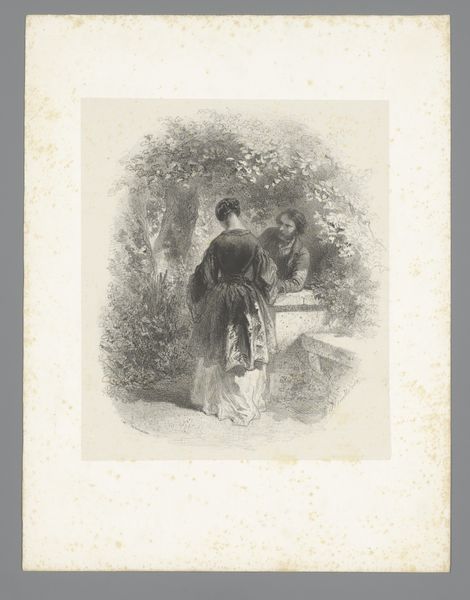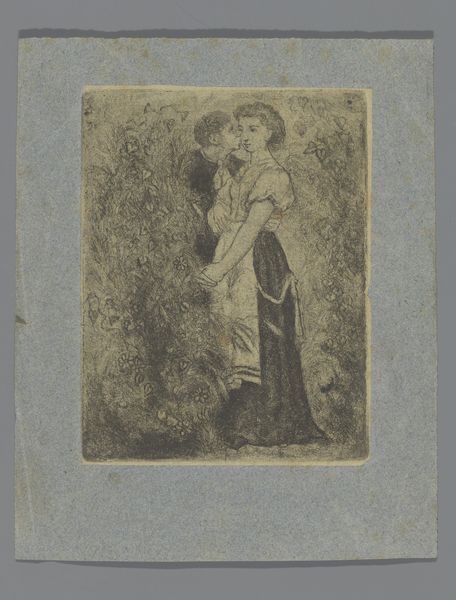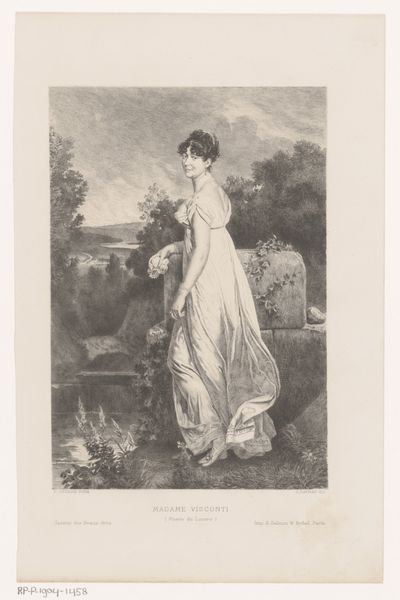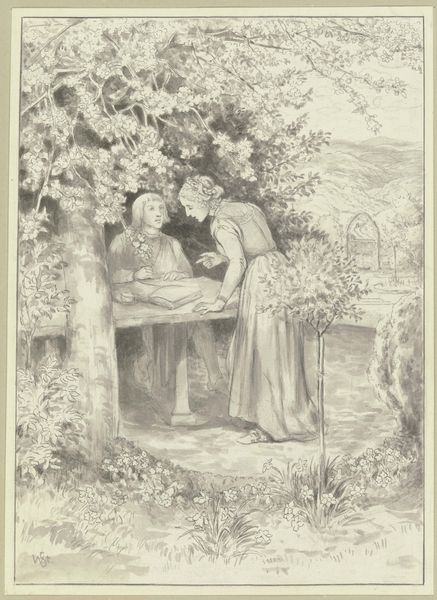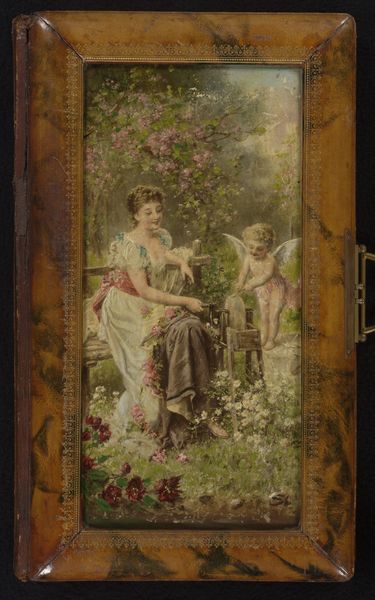
Reproductie van een voorstelling van een onbekende vrouw bij een rozenstruik before 1899
0:00
0:00
Dimensions: height 130 mm, width 81 mm
Copyright: Rijks Museum: Open Domain
Editor: This watercolor reproduction, created before 1899 by C. Angerer & Göschl, presents an unknown woman amongst roses, held in the Rijksmuseum collection. There’s a certain stillness, an almost dreamlike quality about it. What strikes you most about this piece? Curator: The persistence of archetypes. Look at the woman’s pose – the slight bend, the gentle hand extended towards the roses. Doesn’t it evoke Botticelli’s Venus, or any number of depictions of women in idyllic settings? It speaks to the enduring power of imagery linking women and nature, a connection laden with both beauty and, historically, constraint. How does that cultural echo resonate with you? Editor: It's interesting you see the Venus parallel. I was focused on how the woman almost blends in with the roses. Almost camouflaged in a way? Curator: Precisely! Camouflage is key. The woman is part of the rose garden’s iconography; a symbol integrated into the design and ethos. She almost *is* a rose, one with delicate adornments, contributing a vital role to the garden. Does this artwork communicate its purpose or underlying reason to you, beyond its beautiful rendition? Editor: I hadn’t considered her symbolic connection to the flowers so deeply. I was viewing the artwork more literally as a portrait of a lady in the garden! Curator: That’s the wonder of symbols. They invite multiple readings. Recognizing those layered meanings can really enrich our understanding. What did you gain by studying the role symbols have? Editor: That images are alive. They hold memories, ready to speak if we listen. Thank you, that was a wonderful experience. Curator: Indeed. By consciously interpreting this art piece we see how memory echoes to current and contemporary society.
Comments
No comments
Be the first to comment and join the conversation on the ultimate creative platform.
